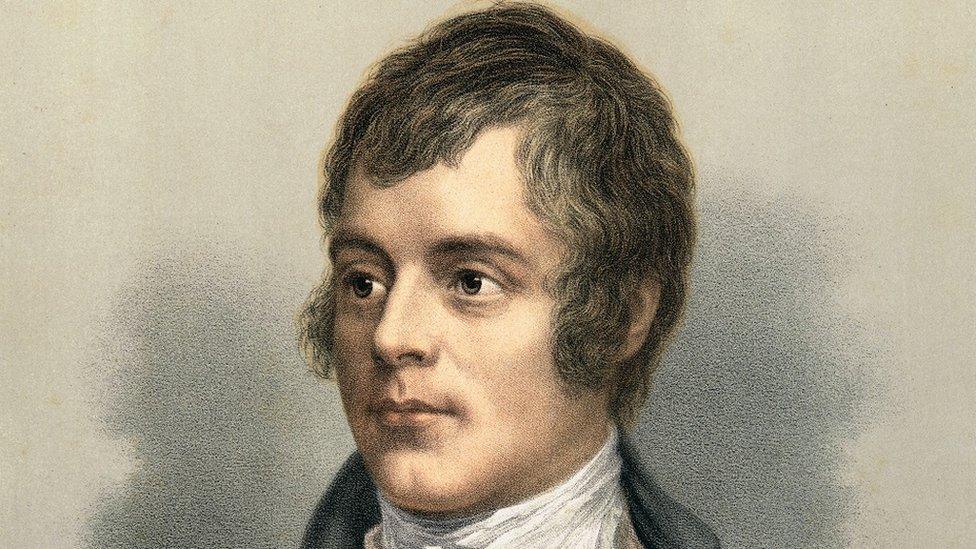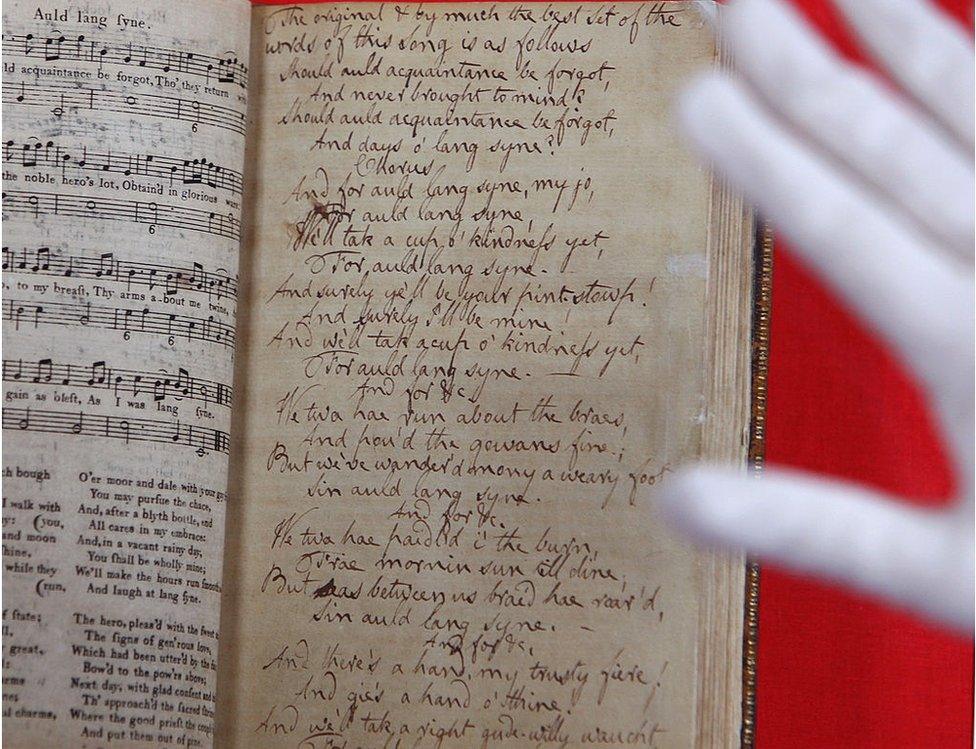Fake Robert Burns manuscripts make millions
- Published

Robert Burns's work became more valuable as his popularity grew and is still in demand by collectors
Fake Robert Burns manuscripts, created in Edinburgh 140 years ago, are still being traded to make millions of pounds, experts have said.
Counterfeit documents, made by a forger in the 1880s, have been fleecing collectors for 140 years.
The fraud is the latest scam to be investigated by Prof David Wilson in his programme Scams and Scandals, Counterfeit Art, on BBC Scotland.
An expert explained how the manuscripts still pop up to this day.
Robert Burns was a prolific writer of songs and poems until his death in 1796. As his popularity grew, so did the value of his handwritten work.
In the 1880s, almost a century after Burns died, Edinburgh forger Alexander "Antique" Smith produced hundreds of fake manuscripts.
He sold them to booksellers, pawnshops and collectors.
The fraudster was caught and sentenced to 12 months in prison in 1893, but many of his counterfeits remain in circulation.
Genuine Burns manuscripts can fetch tens of thousands of pounds at auction today, so there is cash to be made through the fake papers.
Prof Gerard Carruthers, co-director of the Centre for Robert Burns Studies at Glasgow University, talks about the scam in the programme.

The Robert Burns manuscript showing lyrics to Auld Lang Syne was expected to fetch £50,000 at auction in 2009
He authenticates documents across the world and said the Smith counterfeits still cause confusion for experts and collectors.
He said he looked for certain clues to identify fraudulent documents, such as a blue tint or a roughness of the paper.
"I have made three trips this year abroad to look at documents that might or might not be genuine," he said.
"Most recently I've been in New England 'helping' a collector who had hoped that his seven-figure investment was genuine Burns and it turned out certainly to be 'Antique' Smith.
"In other words, even though Smith is now collectable in his own right, that seven-figure sum has become at best a four-figure sum. He'd been hustled."
'Knowingly selling'
He added: "A guy in Texas had said to him 'you've got three days to buy this stuff, I've got another man interested'.
"The collector confessed to me: 'even at the time I thought this doesn't ring true, I'm not sure there is this other man but I'd better grab this'.
"This was an experienced collector of autographs and historic bills. He knows the scams but he still fell for it."
Alexander Smith, born in 1859, was a clerk in an Edinburgh law office when he started using blank fly leaves from old books to create his counterfeits.
He would buy batches of old books at second-hand stores across the capital.
Collectors started to buy up the manuscripts until the scam was uncovered in 1891. Smith was tried and found guilty the following year for knowingly selling and pawning his forgeries.
Prof Carruthers said the biggest collection - 157 - of Smith's fake manuscripts belongs to the New York Public Library.
It is believed there may be more than 500 of Smith's forgeries in circulation.
David Wilson's Crime Files: Scams and Scandals, Counterfeit Art, is on BBC Scotland on Tuesday at 22:00 GMT and on iPlayer.